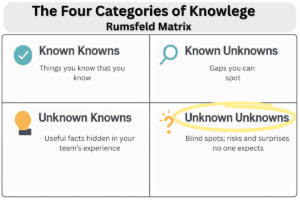The Agile Manifesto for People Who Actually Deliver Work
Agile isn’t new. But it’s still misunderstood.
If you’ve worked in software or IT project delivery, you’ve likely heard people mention “being agile” while following processes that aren’t. Agile was created to solve a real problem—slow delivery, poor communication, and systems that couldn’t adjust when things changed.
This article breaks down the four core values and twelve principles of the Agile Manifesto. Whether you’re running a team or working inside one, this will help you understand what Agile really means and how to make it work.
What Is the Agile Manifesto?
The Agile Manifesto is a short statement created in 2001 by a group of experienced software developers who were tired of slow, over-planned projects.
Instead of laying out a strict set of rules, they agreed on four values and twelve principles that could guide how teams build and deliver software. These ideas focus more on working together, adjusting when needed, and putting the customer first.
Agile isn’t about getting rid of planning. It’s about making sure the work doesn’t get buried under too many layers of process.
What Are the 4 Values of the Agile Manifesto?
The four values are the foundation of Agile. They don’t tell you exactly what to do, but they help you figure out what to care about.
1. People and interactions matter more than tools and processes
A good team that talks regularly will beat a quiet team with expensive tools. Agile doesn’t ignore tools or structure, but it reminds you that collaboration is what keeps a project moving.
Let people solve problems together instead of waiting for some document or process to tell them what to do.
2. Working software is more useful than perfect documentation
It’s better to have a version that works than a stack of plans that never get built. Agile teams deliver working features early and improve them over time.
You still write things down—but just enough to support progress, not slow it down.
3. Collaborating with customers beats locking things into a contract
Plans change. What a client wants in January might not match what they need in May. Agile values conversations with customers so teams can keep the work aligned.
Instead of sticking to a contract no matter what, you check in often and adapt.
4. Responding to change is more valuable than sticking to a fixed plan
Things rarely go exactly as planned. Agile gives teams room to adjust.
This doesn’t mean you skip planning. It means you don’t treat the original plan like a rulebook. If feedback or priorities change, the team changes too.
The 12 Principles of Agile Development
The twelve principles help teams live out the values. They’re not hard to understand, but they do take practice. Here’s how they apply in real work settings:
-
Deliver useful software early and often.
-
Accept changes, even late in the project.
-
Release working updates frequently.
-
Communicate directly whenever possible.
-
Build around motivated people. Trust them to do their jobs.
-
Let teams organize their own work.
-
Keep a steady pace. Avoid burnout.
-
Focus on good design and clean code.
-
Keep things simple. Don’t add more than you need.
-
Review and adjust often.
-
Let teams own their architecture and approach.
-
Keep feedback going between customers and the team.
These ideas aren’t just for developers. Product managers, analysts, and even leadership roles benefit from understanding and applying them.
Why the Agile Manifesto Still Matters today
Most teams don’t follow Agile by the book, and that’s fine. The point of Agile was never to create a strict method. It was to help teams work better under real conditions.
With more remote teams, compliance needs, and changing priorities, the Agile values still hold up. They help you cut through red tape and get useful work out the door.
But Agile gets watered down when companies focus too much on frameworks. SAFe, Scrum, and others have their place, but the values still need to guide the decisions. Without that, you’re just renaming status meetings and adding ceremonies that don’t solve anything.
Next Steps: How to Apply Agile on Your Team
You don’t have to start from scratch or change everything overnight. Here are a few practical ways to bring Agile into your team without creating chaos:
-
Use working demos instead of long presentations when showing progress
-
Cut down documentation to the minimum needed to support real work
-
Set regular checkpoints with customers or business stakeholders
-
Review and adjust every two weeks—focus on one improvement at a time
-
Let teams make decisions about how they work, not just what they do
If your team can talk openly, deliver working features, and adjust to feedback, you’re already on the right path.
Final Thought
The Agile Manifesto isn’t out of date. But the way it’s used can drift if you’re not careful. Don’t let a checklist replace common sense.
Use the values and principles to guide your team toward results that matter. Agile works best when it’s real, not just performed.
If you liked this article, remember to subscribe to MiamiCloud.com. Connect. Learn. Innovate.
FAQs About the Agile Manifesto
1. When was the Agile Manifesto written and why?
It was written in 2001 by seventeen software pros who were frustrated with slow, overcomplicated projects. They created it to shift focus toward people, working software, and constant feedback.
2. What are the four Agile values in plain terms?
-
People over tools
-
Working product over paperwork
-
Collaboration over contracts
-
Adapting over rigid plans
These values help teams make better choices when tradeoffs come up.
3. What’s the point of the 12 principles?
The principles take the high-level values and show how they play out in daily work. They cover everything from frequent delivery to team motivation, technical quality, and reflection.
4. Is Agile still useful in 2025?
Yes, but only when it’s applied with purpose. Teams that focus on outcomes, not ceremonies, still use Agile values to deliver faster and adjust to change.
5. How is Agile different from Scrum?
Agile is the mindset. Scrum is one way to apply it. You can do Agile without Scrum, and you can follow Scrum rules without being Agile.








